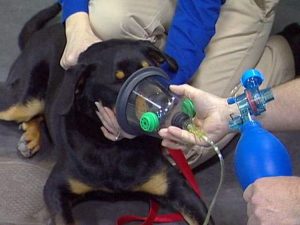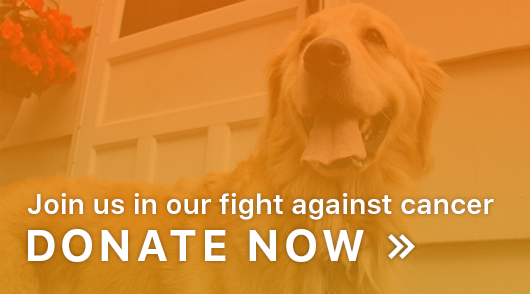
Smoke inhalation can be a real concern for pets including smoke from a fire or second-hand smoke.
Brush fires from San Diego County to Northern California have burned tens of thousands of acres in 2018. Wind and low humidity during the summer months provide a dangerous combination, with dry brush fueling the flames. One cannot help but think about the animals, domestic and wild, who are also affected by these fires.
Daily, heroic animal control officers are navigating through dangerous and fiery terrain to assist residents and their pets. Regular shelters are taking in far more animals than usual and evacuation shelters are being filled to capacity as well.
Once rescued, most animals are requiring immediate medical attention due to smoke inhalation and burns.
Please be certain that you have a plan in place if your family should be faced with an emergency such as a house fire. Know ahead of time how you will transport your animals. Make sure that you have cages/crates to get animals out in a hurry. Make sure that you have several days’ worth of food, water, and medication if necessary, for your pets. Practice your emergency plan ahead of time.
Make sure your pets are micro-chipped in the event that you are separated. The American Veterinary Medical Association has named August 15th “Check The Chip Day” to remind pet owners to have their pets micro-chipped and to keep the registration information current.
Don’t wait. Nobody ever thinks an emergency evacuation will happen until it actually does.
This is also a good time to remind you of the dangers of second-hand smoke to pets.
Most people are well educated about the dangers of smoking. They understand the potential health risks involved every time they light up. They likely realize that these risks extend to nearby people who inhale their second-hand smoke. But do they know that second-hand smoke can similarly affect their cats, dogs, birds and other household companions? Do they understand that pets can suffer the negative health consequence of tobacco products by simply breathing the air circulating around their owners as they puff away?
Second-hand smoke is the smoke inhaled by non-smokers from one of two sources: the smoke produced by the burning end of a cigarette, cigar, or pipe OR the smoke exhaled by the smoker who inhaled it in the first place. Direct contact with a tobacco product is not necessary to be exposed to the dangers of smoking.
Living in a house with a smoker puts all types of pets at greater risk of many health problems.
Dogs exposed to second-hand smoke have more eye infections, allergies, and respiratory issues including lung cancer.
A study at Colorado State University demonstrated that dogs living in smoking environments also had an increased incidence of nasal cancer. Interestingly, the length of a dog’s nose is associated with the type of cancer incurred from inhaling second-hand smoke.
Long-nosed dogs are prone to nasal cancer while short-nosed dogs often get lung cancer. Long-nosed dogs such as Collies, Labradors, and Dobermans have increased surface area in their nasal canals. This increases the likelihood that toxins and carcinogens in tobacco smoke will be trapped in the nasal passages and accumulate in the nasal mucus. This explains why these breeds have a higher incidence of cancer in their nasal canals. In fact, the incidence of nasal tumors is 250 percent higher in long-nosed dogs living in smoke-filled environments.
Short noses aren’t effective “trappers” and allow more inhaled particles and carcinogens to reach the lungs. That’s why short-nosed dogs such as Pugs, Shih Tzus, and Pekingese develop more lung cancer than their long-nosed friends.
Cats, due to their short noses, are at greater risk of developing lung cancer if living in a smoky environment. Cats exposed to second-hand smoke are also about two times more likely to develop lymphoma, a cancer of the lymph nodes that carries a poor prognosis for survival.
As if second-hand smoke isn’t bad enough, pets also suffer health consequences from “third-hand smoke,” which is the residue that clings to furniture, rugs, and pet fur long after the air in the room is cleared. For example, cats that groom excessively can develop tumors in their mouths from licking off toxic particles/carcinogens that accumulate on their fur from smoke-filled air. The long-haired Samoyed that nuzzles her nose back around into her side while she sleeps is continuously breathing in toxins from the smoke residue in her coat.
Our pets motivate us to do many things that subsequently affect our health in positive ways. A study conducted at the Henry Ford Health System in Detroit demonstrated that 28.4 percent of smokers said they would try to stop smoking after learning that second-hand smoke was detrimental to their pets’ health. And 8.7 percent claimed that they would motivate their partners to quit, too!
Poisoning from e-cigarettes is a relatively new threat to animals. Electronic nicotine delivery systems were introduced in the U.S. about 10 years ago. E-cigarettes and e-pipes usually contain liquid nicotine, which is poisonous to pets. According to the ASPCA Animal Poison Control Center, in recent years, the center has seen a decrease in the number of reports of pets getting sick from ingesting tobacco cigarettes. However, incidents involving e-cigarettes have been on the rise.
Dogs can also get sick from chewing on and ingesting pieces of the e-cigarette batteries.
Some people are using the smoking devices to inhale marijuana. The concern there is related to the tetrahydrocannabinol — which is the primary active ingredient in marijuana and is toxic to pets.
This month, please be sure you have an emergency evacuation plan in place for your family, have your pet micro-chipped, and if you smoke, quit for pets’ sake.








